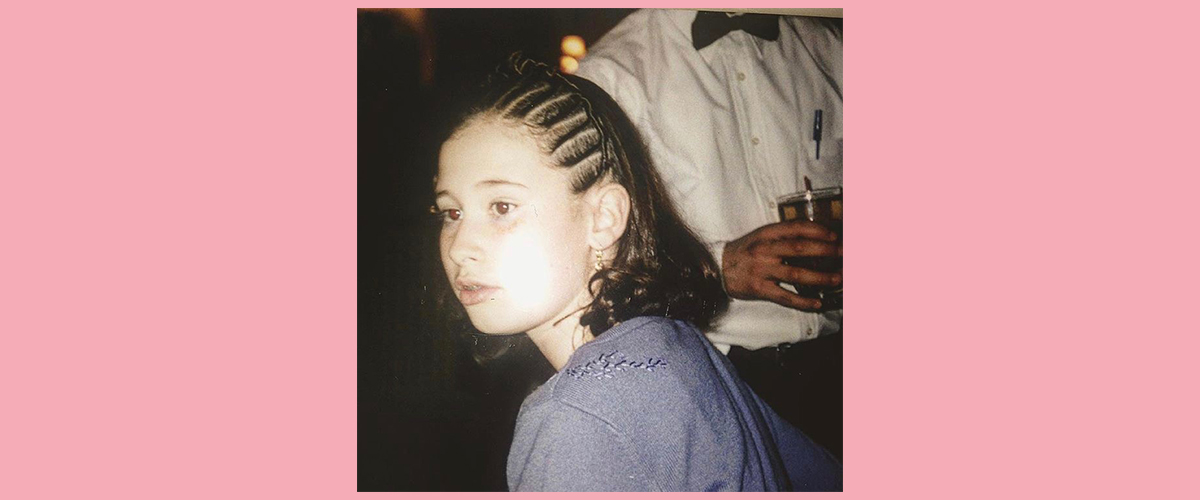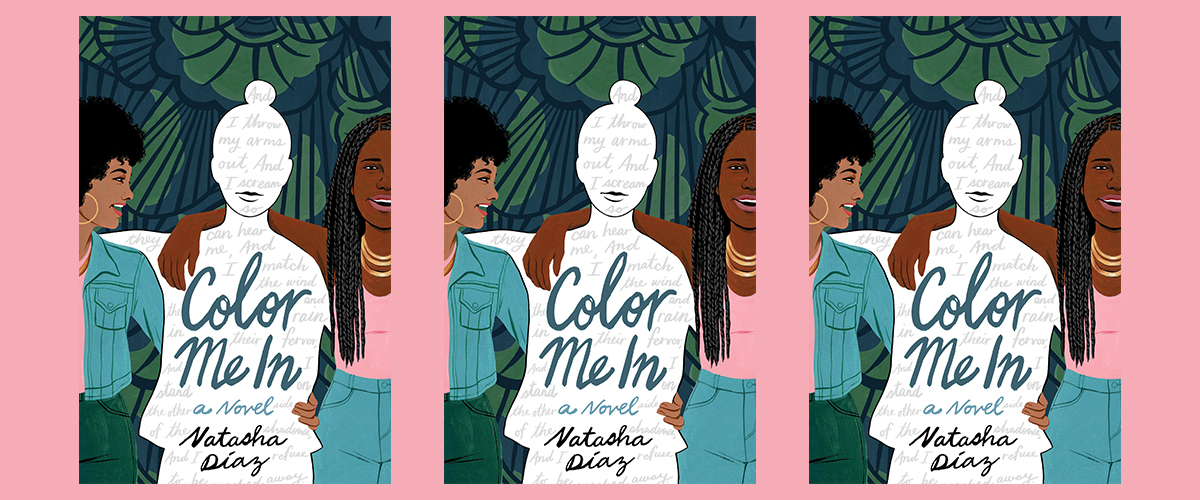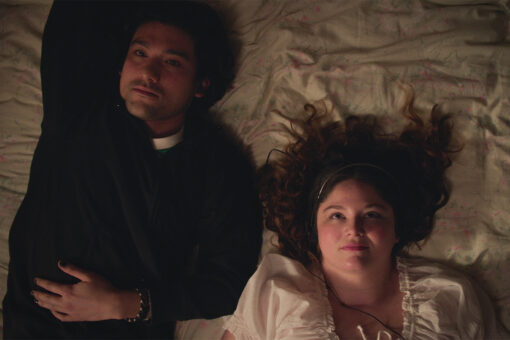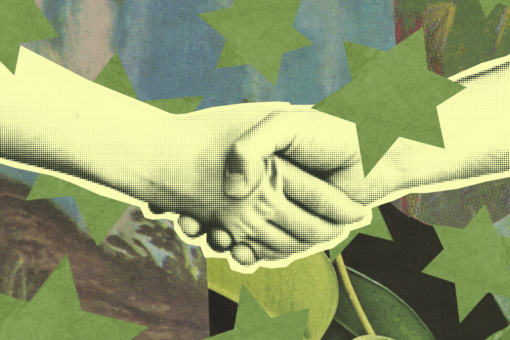Natasha Díaz was 9 years old when she and her mom went on Oprah to talk about the experience of being a multiracial family. Díaz, who has a Jewish father and a Liberian and Brazilian mom, had recently been featured in a documentary called Between Black & White. When Oprah asked her a question, young Natasha froze up (you can watch the video here).
Well, she is freezing up no longer — Díaz’s debut YA novel, Color Me In, fictionalizes her childhood and tells the coming-of-age story of Navaeh Levitz. Navaeh is a Black Jewish teenager whose father forces her to have a belated bat mitzvah at age 16. Navaeh’s parents are in the midst of a divorce, and the bat mitzvah is her father’s way of having her stay connected to his family. Meanwhile, Navaeh is struggling to figure out her identity, her relationship to her blackness, her privilege, a blossoming relationship, and her family. It’s a compelling and timely read.
We had the chance to chat with Díaz about writing Color Me In, #OwnVoices in young adult literature, and connecting with her Jewish identity.
How close does the protagonist Naveah’s experience as a Black Jewish teenager mirror your own?
I would say in a lot of ways it’s similar, and in a lot of ways it’s very different.
We have very similar backgrounds, racially and religiously. I am multiracial, she’s biracial. I’m Brazilian, Liberian, and Jewish, where she’s just half-Black and half-Jewish. And my parents separated, similar to her, although mine separated when I was much younger than she was. And, as a result of my parents’ divorce, it was literally in the divorce papers that I had to be raised Jewish.
Aside from that, I would say we’re completely different. I was raised very immersed in my culture, especially on my mom’s side, which is where the Black and Brazilian side is. My parents had split custody [over me], so I spent time with both families, but I’m closer to my mom’s family because a lot of my dad’s family doesn’t live in New York City. Where Naveah was sheltered from her identity, I was very immersed in mine.
It doesn’t mean that we haven’t, at times, shared a lot of the same insecurities, like feeling you don’t really fit in in either world, or you’re not really sure what part of yourself you have a right to claim or own. I’ve never had an extremely religious connection to Judaism. Culturally, though, especially growing up in New York City, there’s a lot of Jewish cultural things that I connect to on a personal level.
What was the most challenging part of writing Color Me In?
Honestly, it was separating what my experience was from what this story was. There are a few things in the book that I did experience and I used for inspiration, and there are certainly characters who were inspired by people in my life. But, you know, a lot of times when you’re writing something that is so personal, it feels like you don’t have a right to tell it unless you’re telling it exactly how you experienced it. You don’t want to make it seem like you’re telling someone else’s story. But at the same time, it has to be a good book! I had a point that I was trying to get across that couldn’t have been made had I just written my biography as a fictionalized story.
So, it was really making sure that I was staying true to the story and the message I was trying to get across, and feeling like I could do that authentically with the experiences that I have had, while also making sure the priority was to tell an engaging and authentic story that young people can enjoy, learn from, and hopefully see themselves in.
Was the character of Rabbi Sarah based on anyone in real life?
I did have a bat mitzvah — I mean, I didn’t have a choice, I was forced to do it. It wasn’t something that I was very engaged with. I really ran through the motions, and I didn’t really engage with the experience on an emotional or cultural level. I really just did it, and then I moved past it, because it felt like a homework assignment.

When I decided to tell this story, and incorporate that experience, it [became] my chance to relive this experience that I had taken for granted. It was important to me that the rabbi character be a convert, because I wanted there to be this connection between her and Naveah where they both had these experiences of feeling like outsiders within their own communities.
I was very fortunate to be connected to a rabbi who had converted to Judaism [while writing the book]. I met with her a couple of times, and we stayed in touch. [It was a] little bit of sensitivity reader type relationship where I was like, I want to make sure that I’m accurately portraying this and not completely misrepresenting what your experience has been.
We see a lot about the idea of #OwnVoices when it comes to young adult literature – do you think it’s important for people to bring their own stories into their writing?
#OwnVoices is important, and I use #OwnVoices when I talk about this book because I do want people to know that I am coming from a place of personal experience. But at the same time, #OwnVoices can pigeonhole people and make it seem as though only someone who has an exact experience can can tell a certain story, and that you can only talk about those specific things in your writing. It’s narrowing, a bit.
The reason that we need to clarify that things are #OwnVoices is because for so long, the marketplace has been saturated with cisgendered white men telling everyone’s story from their perspective. You can tell the difference when [the story is] coming from the perspective of someone who is in these cultures or communities; it is important to be able to claim that, and use that to describe your book, while also acknowledging that using #OwnVoices as a descriptor is necessary simply because there haven’t been opportunities for us to tell our own stories until now.
The book dives into the complicated realities of being biracial and addresses heavy topics, from Black Lives Matter to colorism. Did you receive any pushback, as this is a YA novel?
I was really fortunate to feel very supported. Right now, in this country, there’s so much divisiveness and outward hate that has become the norm – whether it’s racial, religious, sexuality, gender. There’s just so much hate that becomes so normalized, and so it felt really timely to tell a story like this where you are addressing these sorts of issues for younger people — because it’s young people’s reality. I mean, it’s everyone’s reality, but especially when young people are coming into themselves, they deal with these things! In the past, it has been taboo to to talk about these things; you just brushed them under the rug. I don’t think you can do that anymore. I didn’t feel comfortable telling the story without touching on and really delving into those specific issues.
What do you hope readers take away from Color Me In?

I hope that anyone who reads it, who has felt othered, or who hasn’t felt comfortable in themselves for whatever reason, or other people don’t accept them for who they are, knows: They have a right [and] a pride in who they are and there’s nothing wrong with taking ownership of that.
I also hope it makes [readers] evaluate their privileges — racial, socio-economic, educational, or whatever they may be. There’s always a way to take a step back and say, wow, I have an opportunity to do something or, I have access to something that other people in my community don’t, and take that and try to activate that privilege to help those members of their community that may not have that access.
And, to use their voice — that means sometimes shutting up. Sometimes the best thing you can do is take a step back, be quiet, and give someone else the chance to speak.
In the reader’s note at the end, you say, “Writing this book was my opportunity to engage with Judaism as not just a religion or a lifestyle, but as my tribe.” Can you expand on this?
My ownership of my identity has gone through many waves. There are times when I felt it’s much easier for me to be like, it’s hard for me to claim being Black when I look so white, but Judaism is different. Judaism, in so many ways, is thought of just as a religion, not as a culture or ethnicity – which it also is! Growing up, I was resentful of my Judaism because I [thought] that’s why I’m white. That’s why I don’t look like my family and also I don’t believe in this religion, so it’s taking this other thing away from me that I feel connected to.
As I’ve gotten older, I’ve come to feel very connected culturally and ethnically as a Jewish person. I realized it doesn’t have to be one or the other. These [aspects of myself] fit together in me in a unique way that I can take and own however I want to.
If I could go back, I would love to have another bat mitzvah. Not necessarily [because] it would change whether or not I became, or felt, more religious — I don’t think that would change. This idea of a ceremony of coming of age — of becoming an adult, taking responsibility for your actions — that’s a really beautiful tradition. I wish I had not been such an angsty teenager.
This interview has been lightly edited. Image of Natasha Díaz in header by Christine Chambers. Color Me In is out August 20, 2019.



